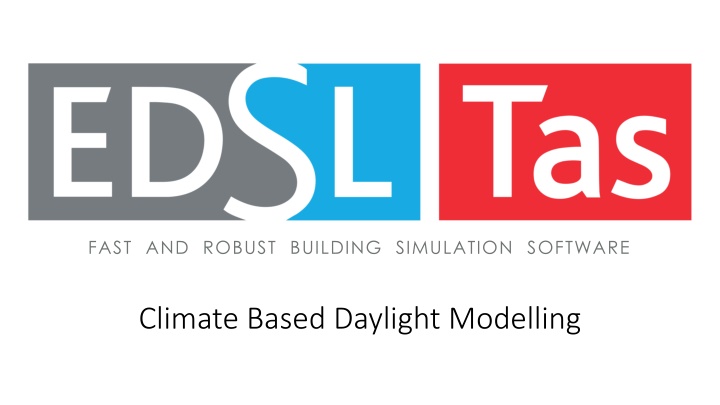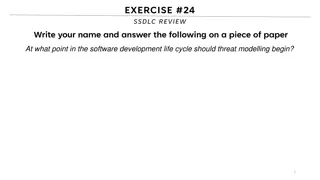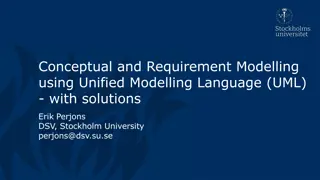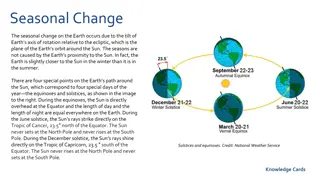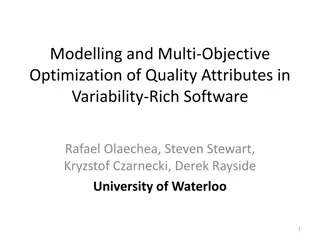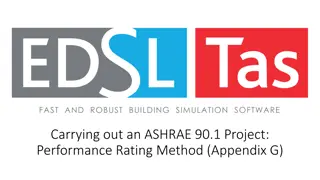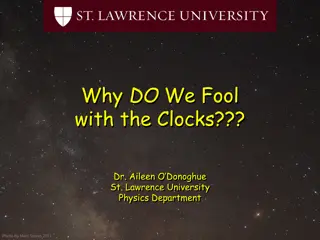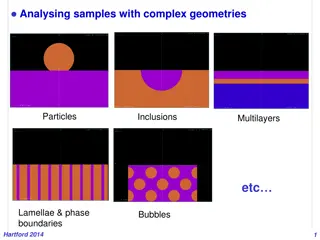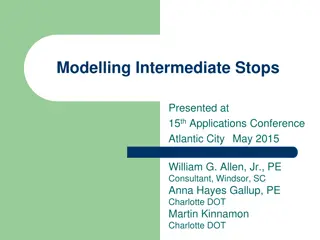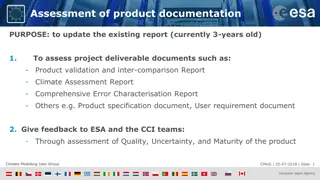Climate Based Daylight Modelling with Fast and Robust Building Simulation Software
Tas software offers climate-based daylight modelling to assess light distribution and intensity in a space. It combines thermal and daylight simulation engines to calculate solar and daylight contributions, providing metrics like UDIs, DA, and more. The software allows specific spaces to be analyzed individually for a comprehensive range of assessments without simulating the entire building model. Through hourly calculations using climate data, it enables the evaluation of daylight autonomy, illuminance levels, and glare potential, aiding in designing comfortably lit spaces while optimizing energy usage.
Download Presentation

Please find below an Image/Link to download the presentation.
The content on the website is provided AS IS for your information and personal use only. It may not be sold, licensed, or shared on other websites without obtaining consent from the author.If you encounter any issues during the download, it is possible that the publisher has removed the file from their server.
You are allowed to download the files provided on this website for personal or commercial use, subject to the condition that they are used lawfully. All files are the property of their respective owners.
The content on the website is provided AS IS for your information and personal use only. It may not be sold, licensed, or shared on other websites without obtaining consent from the author.
E N D
Presentation Transcript
FAST AND ROBUST BUILDING SIMULATION SOFTWARE Climate Based Daylight Modelling
Tas Climate Based Daylight Modelling Climate based daylight modelling originated in the lighting simulation community. Hourly diffuse and direct solar radiation climate data is used to produce daylight coefficients for patches of sky. Irradiance data is converted to illuminance using a luminous efficacy model. The daylight contribution to the space is then calculated hourly through the year for each sky patch. EDSL s Tas software has originated in the thermal simulation community. Our Tas software calculates the diffuse and direct solar distribution in spaces hourly through the year. We have developed a daylighting simulation engine, which is fully integrated with our thermal simulation engine. We are, therefore, able to calibrate the daylight contribution from the solar contribution in a space using luminous efficacy. Put simply, we convert the hourly solar income into hourly daylight income. The following slides illustrate the functionality of the combined thermal and daylight simulation model on a classroom.
Tas allows specific spaces, from a large model, to be selected for individual analysis. A complete range of analysis may be undertaken on the selected space, or spaces, without having to simulate the whole of the building model. Here a classroom has been selected to produce CBDM metrics and adaptive comfort analysis. The roof has been made transparent in the display to show internal layout.
15.00 hours, end of March: Direct sunlight patches visible through the windows
15.00 hours, end of March: Plan View of Classroom: Clear sky daylight simulation shows daylight lux level distribution
15.00 hours, end of March: False colour daylight distribution for the same hour
A Summary of the CBDM Metrics Climate Based Daylight Modelling aims to assess the distribution and intensity of a light within a space. UDIs Supplementary Annual occurrences less than UDIa Limit lux. UDIa Autonomous/ Acceptable Annual occurrence of illuminance between UDIa Limit to UDIe Limit lux. UDIt - Target Annual occurrence of illuminances greater than UDIe Limit lux. UDIe Exceedance/ Excessive Annual occurrence of illuminances greater than UDIe Limit lux. DA Daylight Autonomy Amount of time a space reaches minimum acceptable illuminance In the UDIs range, electric lighting is required. In the UDIa range, electric lighting is not required. In the UDIe range, spaces may be subject to glare and be too bright for the occupants.
* CBDM metrics show that the UDIa at 66% is below the acceptable level. The UDIe at 32% indicates that there could well be excessive glare for about a third of occupied hours. * Autonomous/ Acceptable , Target , & Exceedance/ Excessive lux levels can be varied to match location & conditions. Values can be adjusted in Tas. This example uses 100/ 300/ 3000 lux
Plan View of Classroom: The UDIa distribution over the working plane shows poor performance in the front third of the space.
Plan View of Classroom: The UDIe levels are excessive at the south end of the classroom The glazing configuration is meant to throw daylight to the back of the classroom, which is achieved, but at the expense of performance closer to the windows.
This new configuration of the south wall s windows has the middle row removed. The high level windows still throw light to the back of the space. The view is maintained by the lower row of windows.
Daylight analysis: 15:00 hours, end of March A useful amount of daylight is reaching the back of the room via the high level windows. The amount of direct sunlight next to the windows is reduced.
Original Configuration Revised Configuration Daylight analysis: 15:00 hours, end of March hours, end of March Daylight analysis: 15:00 Original: 3 rows of windows at south wall Revised: 2 rows, middle row removed
This time the UDIa is at 85% giving a very good performance. UDIe is at an acceptable level. High level windows have given a good general distribution of daylight and the low level view windows do not produce excessive glare.
Daylight analysis: 15:00 hours, end of March The UDIa distribution is quite flat, which is ideal.
UDIe is confined to close to the view windows.
The high level windows at the front and back of the room are good for daylight distribution, but are also very useful for natural ventilation combined with some limited view window opening. The reduction in lighting gains has also helped to achieve a pass on BB101 with the London Test Reference Year (TRY) weather set, and on TM52 when using the same weather set. Performance metrics can be output to Excel or pdf as shown.
An alternative to removing the middle row of windows would be to provide some solar shading to reduce the direct sunlight through these windows. This configuration also had good CBDM metrics. Both configurations worked well on all orientations. This fa ade solution is but one of many that would comply with the CBDM criteria
To provide an insight into the single number metrics for the whole year, they are available on a monthly, weekly, and hourly basis. UDIs (Supplementary) UDIa (Acceptable) UDIe (Excessive) The secret to a successful solution is to have the Excessive level consistently low over the year.
Weekly distribution UDIs (Supplementary) UDIa (Acceptable) UDIe (Excessive)
Hourly distribution UDIs (Supplementary) UDIa (Acceptable) UDIe (Excessive)
The Tas daylight engine is able to provide analysis for LEED and BREEAM daylight credits. It is also able to undertake all Right to Light calculations, supported by the ability to import 3D DWG cityscape models.
